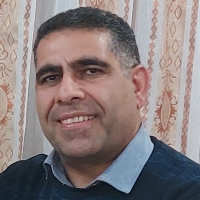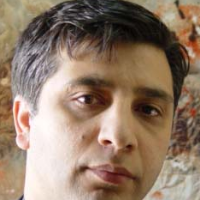Detection of the Snow-Cover Changes on the Urmia Lake western Basins Using Object-Based Image Analysis (OBIA) Methods
This article focuses on analyzing snow cover changes in the western watersheds of Lake Urmia (Zola Chay, Nazlou Chay, Shahr Chay, and Barandoz Chay) using object-based image analysis methods applied to satellite imagery. The study utilizes Sentinel-2 and Landsat-8 satellite images to extract the extent of snow cover for days with maximum snowfall. This data was then processed using object-based methods, and the future state of snow cover in these four watersheds for the year 2029 was simulated with 80% accuracy using the CA-Markov model.In addition, the depth of snow was examined using FLDAS_NOAH data and analyzed through the normalized residual mass curve method in Excel. The study reveals fluctuations in snow cover and depth across all four sub-watersheds between 2016 and 2023, showing an overall decreasing trend. The highest snow cover occurred in 2018, 2019, and 2021. In terms of snow depth, the maximum and average values reached their peak in 2020, with figures of 2.28 meters and 0.68 meters, respectively. Conversely, the lowest maximum snow depth was recorded in 2016 and 2018, at 1.07 meters and 1.1 meters. Moreover, the CA-Markov snow cover map for 2029 indicates a relatively increasing trend in snow cover. Despite the region's water scarcity issues, the findings of this study suggest that other factors are contributing to the intensification of water shortages and the reduction of Lake Urmia's water level. Identifying and examining these factors is crucial for effective water management in the region.
-
Flood hazard modeling using the weight of evidence (WOE) method in the Azarshahr Chai basin
Mohammadhossein Rezaei Moghaddam *, , Tohid Rahimpour, Vahideh Taghizadeh Teimourloei
Hydrogeomorphology, -
Assessing Spatio-Temporal Changes in the Ecological Livability Index (Case Study: Tabriz Metropolis )
Sajjad Moshiri, Ahmad Nikdel Monavvar, Mohammadreza Jebraily, Iraj Teimouri *, , Bakhtiar Feizizadeh
spatial planing, -
Comparative evaluation of a semi-distributed hydrological model with an integrated model to simulate the runoff of Gomanab Chai basin
Mohammadhossein Rezaei Moghaddam *, , Meysam Skandarialni
Hydrogeomorphology, Autumn 2024 -
Spatial analysis of micro-climate regions in central Iran using statistical techniques
Ali Mohammad Khorshid *, Saeid Jahanbakhsh Asl, , Farahnaz Khoramabadi
Journal of Climate Change and Climate Disaster,



